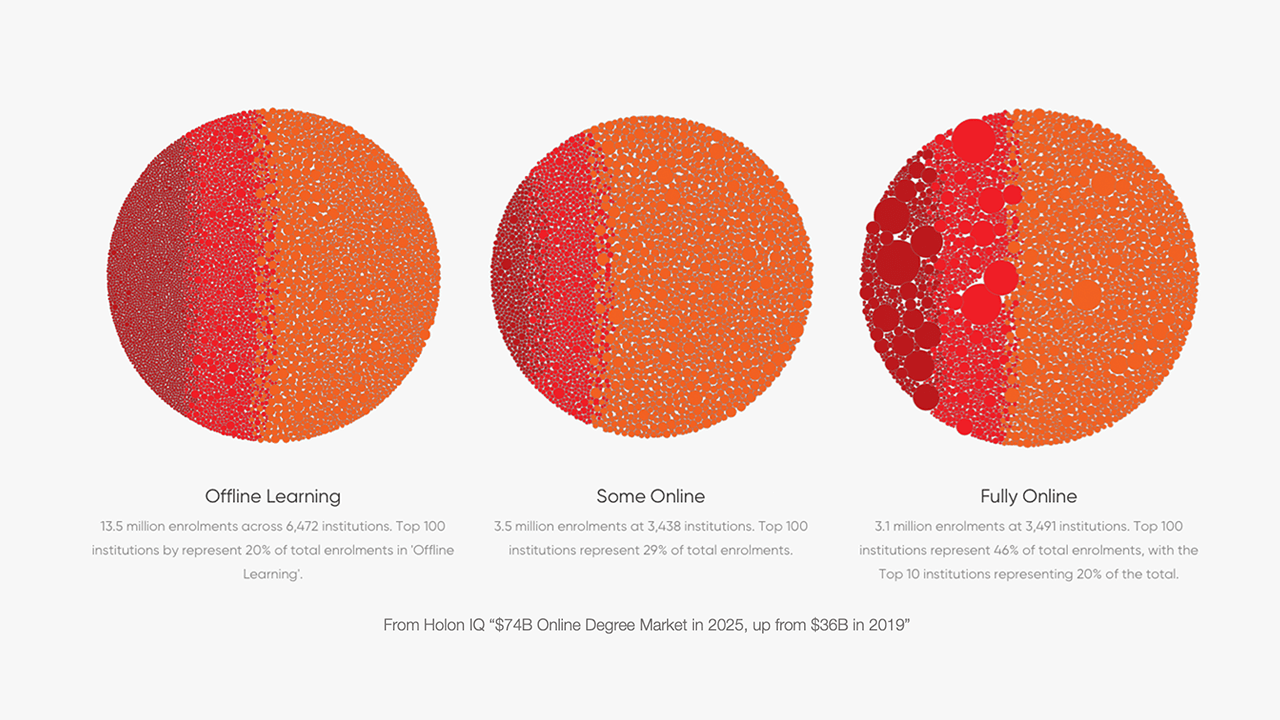The acceleration of online programs and what it will take to win

Covid-19 has forced colleges to redeploy their programs online for business and learning continuity. Some were well placed to do this as leaders in online program delivery (Arizona State and Imperial College, to name two). Most struggled to redeploy to virtual delivery at scale. But, there’s a leap between these admirable emergency solutions and what students will choose in a competitive online program marketplace.
It’s interesting to contrast two analyses of how the future may play out:
In “Higher Ed Needs a Long-Term Plan for Virtual Learning,” DeVaney and others provide an inside-out, educationally thoughtful assessment of how institutions must change. They forecast, “what began as [an emergency] response to a crisis could well become an enduring digital transformation of higher education.” I agree with many of their conclusions about the challenges facing institutions once Covid-19 is behind us.
As a counterpoint, in “$74B Online Degree Market,” HolonIQ provide an excellent top-down market assessment of OPM, different providers, and scenario projections for how institutions may grow and evolve, and how much of the educational experience and value chain they will ultimately own or outsource.
However, both are missing two critical factors for success that colleges must embrace as they scramble to grow their online programs as a strategic opportunity or contingency:
1. Students shopping for online programs are sophisticated digital consumers: shopping for an online program, they will pick and choose what suits them in brand (what doors will a qualification from this college open?), flexibility (to suit their schedule, lifestyle, and preferences), and value. They also will come with high expectations for their online experience (and most of today’s LMSs fall a long way short). Both mean that it will be critical to take a student-centered approach to designing their end-to-end experience (from online recruitment and onboarding to learning and alumni programs). There is deep expertise in the commercial sector that can help here (from managing gyms to the best Private Language School chains).
2. Students will look for program results as part of their value analysis: they will look for value for money and part of that will be the college’s program results—peer recommendations, and retention, completion, and graduation stats. There are well-known levers to drive each of these. But, it will amplify the need for evidence-driven design of the experience—combining not just “what works” from learning science, but “what works” from the commercial sector for attracting, nurturing, and retaining customers.
All in all, these are good challenges to face because they put students and their success front and center.
It’s going to be a rewarding journey.
